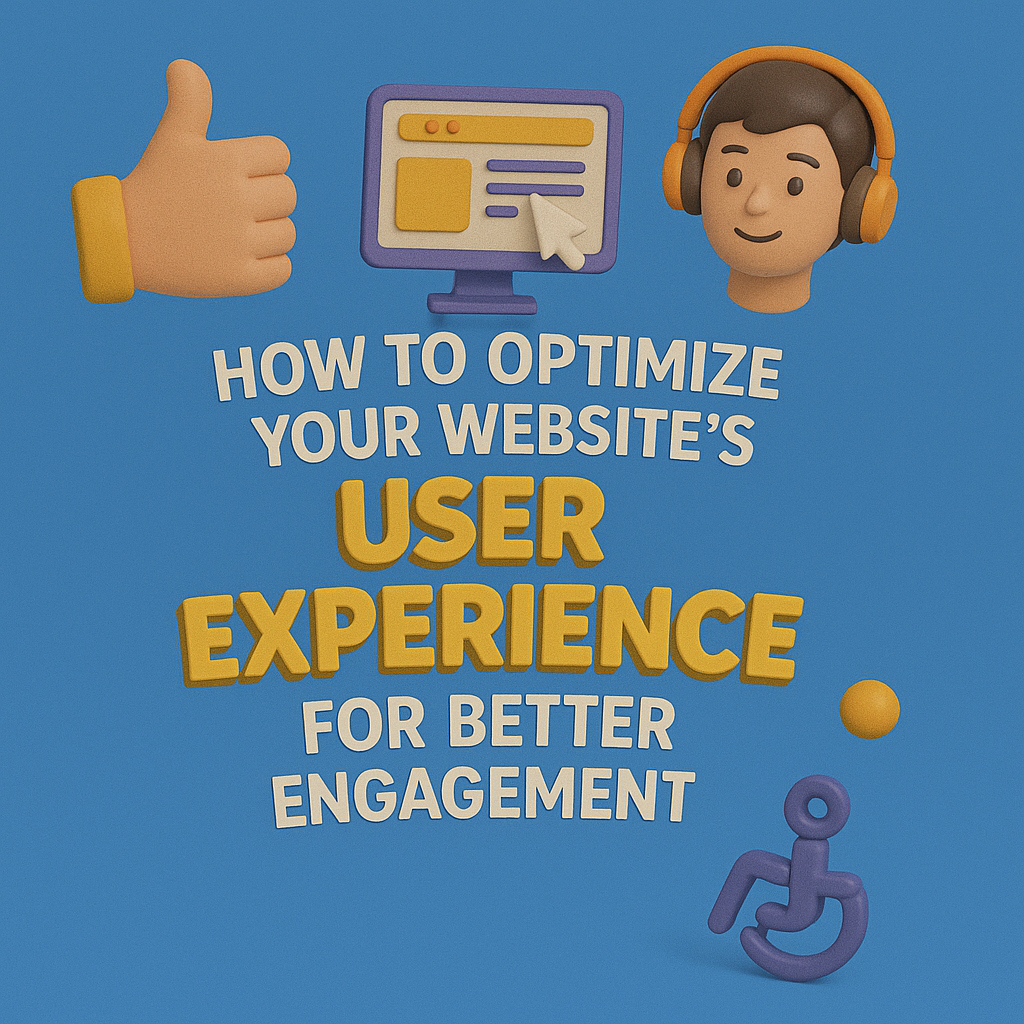Picture this: a potential customer lands on your website. You’ve got about 7 seconds to win them over. If your site loads slowly, looks cluttered, or feels confusing to navigate, you’ve likely lost them. In fact, that’s the harsh reality of modern digital behavior. For this reason, website user experience optimization is the heartbeat of your site. When done right, it pulls people in, keeps them engaged, and subtly guides them toward taking action—without them even realizing it.
So, in a digital world bursting with competition, optimizing your website’s UX is no longer optional. It’s the make-or-break factor in turning casual visitors into loyal customers.
What Website User Experience Optimization Means in Web Design
User experience in web design is all about how someone feels when they interact with your site. Are they confused or confident? Frustrated or fulfilled? For example, it covers everything from how fast your site loads to how easy it is to find information. In other words, a beautifully designed site means nothing if it doesn’t work for the user.
As a result, good UX leads to more time on site, more clicks, and more conversions. Moreover, it aligns user goals with business goals, creating a win-win interaction that keeps people coming back.
Key Elements That Shape Great UX
Now, here’s where we roll up our sleeves. The following elements are non-negotiables in crafting a seamless user experience:
- Page Speed: Slow sites kill engagement. Users expect pages to load in under 2 seconds. Every millisecond matters.
- Mobile Responsiveness: With most traffic coming from smartphones, your site must perform just as beautifully on a small screen as on a laptop.
- Intuitive Navigation: Users should never have to think about where to go next. Clean menus, visible CTAs, and logical page flow are essential.
- Visual Design & Layout: A well-structured layout reduces cognitive load and helps users focus on what matters.
- Clear CTAs: Whether it’s “Buy Now,” “Contact Us,” or “Get a Quote,” CTAs should be visible, compelling, and consistent.
- Accessibility & Readability: Make sure your site is usable by everyone—including people with disabilities. Contrast, font size, alt text, and keyboard navigation all matter.
In short, these elements work together like instruments in a symphony. Miss one, and the harmony breaks.
Reading Between the Clicks: How UX Tools Give Perform Website User Experience Optimization
You can’t improve what you don’t measure. So, that’s where behavior analytics come in.
For example, tools like Hotjar, Crazy Egg, and Google Analytics let you see your website through your users’ eyes. Heatmaps show where users click, scroll, and pause. Meanwhile, session recordings give a front-row seat to actual user journeys.
As a result, these tools highlight friction points, confusion triggers, and drop-off zones. Therefore, once you know what’s not working, you can fix it.
Best Practices for Website User Experience Optimization
UX isn’t about a single grand redesign—it’s about constant refinement. So, here’s how to start:
- Start with Empathy: Understand your users’ goals, challenges, and mindset. Design for them, not for your stakeholders.
- Keep It Scannable: Most users skim. For instance, use headers, bullets, short paragraphs, and visuals to guide their eyes.
- Minimize Choices: Don’t overload users with options. Focus on one main action per page.
- Use Feedback Loops: Confirm actions (like adding to cart), highlight errors clearly, and always show users what’s happening.
- Test, Tweak, Repeat: A/B test layouts, button styles, and content. Let data guide your design decisions.
Quick Wins vs. Long-Term UX Strategy
Sometimes you need fast fixes. For example, improving page speed, simplifying your nav menu, or redesigning a CTA can have instant impact. However, UX isn’t a one-time project. Instead, it evolves as your audience, technology, and trends evolve.
Short-term UX wins:
- Compress images to speed up loading
- Make buttons bigger on mobile
- Improve CTA visibility
Long-term UX strategy:
- Redesign your information architecture
- Establish and enforce a design system
- Implement ongoing user testing and analytics reviews
In conclusion, combine the two for real, sustained improvement.
Why Optimized UX Pays Off
Let’s get into the real-world impact. A well-optimized UX can lead to:
- Lower bounce rates (people stick around longer)
- Higher engagement (more scrolling, more clicks, more sharing)
- Better conversions (whether that means sales, leads, or sign-ups)
- Greater trust and brand loyalty (people remember smooth experiences)
In other words, your website is often your first impression. So, make sure it’s a good one.
Website User Experience Optimization – A Business Strategy
Here’s the bottom line: a slick design means nothing if users can’t navigate it, understand it, or enjoy it. In fact, UX is where design meets psychology, performance meets empathy, and data meets creativity.
Therefore, if your website is falling short on engagement, it’s time to re-evaluate how user-friendly it really is. At Fuel IT Online, we specialize in designing websites that not only look stunning but convert like crazy. For example, from heatmap analysis to mobile UX optimization, we help brands turn browsers into buyers.
Finally, let’s build a web experience your users will actually love. Get in touch with Fuel IT Online today.




